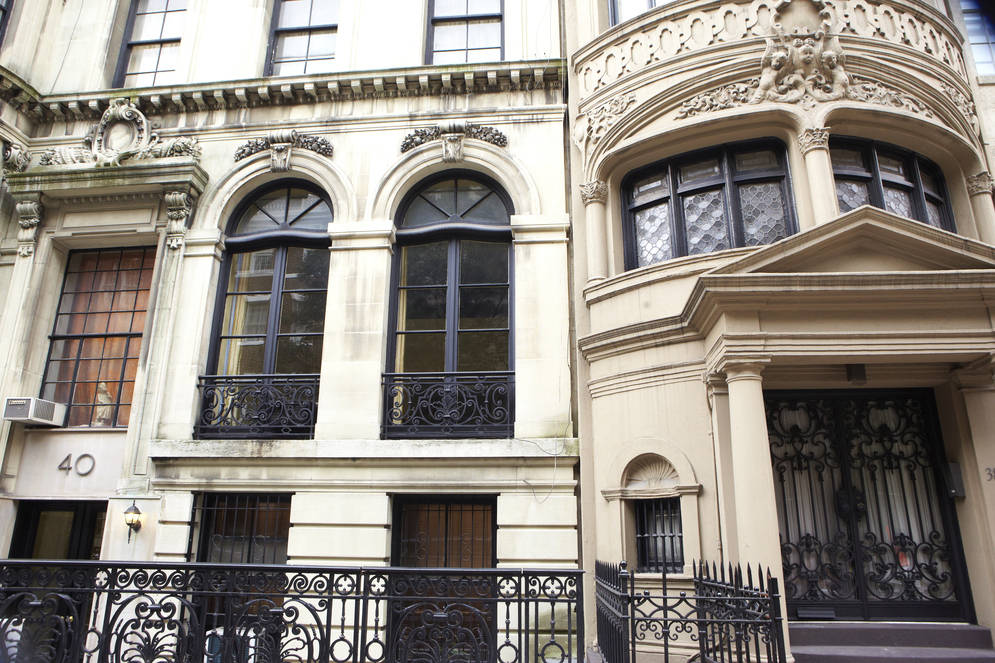#7267. Exquisite Historic Facades: Neoclassical Splendor in Urban Architecture

The image showcases an exquisite example of historic urban architecture, likely dating from the late 19th to early 20th century. The facades of these adjacent buildings demonstrate refined elements of neoclassical and Beaux-Arts styles with rich ornamental detailing.
On the left, we see building number 40, whose facade is adorned with arched windows featuring elegant semicircular tops. Particularly noteworthy is the decorative plasterwork above the window openings, including garlands and medallions. Cast iron balcony railings with intricate patterns add grace and lightness to the facade, contrasting with the solidity of the stone masonry.
The building on the right features more pronounced decorative facade elements. A remarkable detail is the semicircular bay window with a richly ornamented parapet displaying floral motifs and heraldic elements. Especially prominent is the projecting portico of the entrance group with fine architectural details and decorative framing. The wrought iron gates and railings on the ground floor demonstrate exceptional craftsmanship in artistic metalwork.
Both buildings are unified by a common stylistic approach to their facades — light-colored stone cladding material, vertical rhythm of windows and decorative elements, creating a cohesive architectural composition characteristic of prestigious urban neighborhoods of that era.